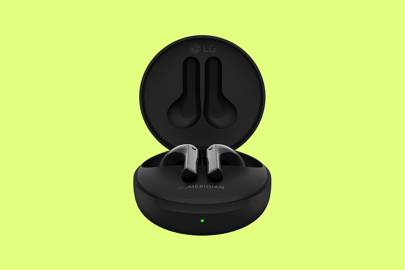
It’s probably just us, but ‘Tone Free’ doesn’t sound the most inspiring or even positive name to give to a range of headphones. It sounds like a euphemism for ‘tone deaf’. So, as a courtesy to LG, the rest of this review will refer to the HBS-FN7 true wireless in-ear headphones, which is a bit of a mouthful, but at least doesn’t have any negative connotations.
The world is far from short of true wireless in-ear headphones, but the HBS-FN7 have one or two intriguing features that make them worth investigating. There’s the involvement of British hi-fi savant Meridian in their tuning. There’s the active noise-cancellation circuitry that differentiates these earbuds from their HBS-FN6 predecessors. And there’s the UVnano technology that uses UV light to clean the earbuds of bacteria when they’re charging in their little case.
So if LG has managed to deliver hi-fi sound at the same time as eliminating external noise and keeping its earbuds squeaky clean, the HBS-FN7 have a chance of standing out from the crowd. It’s a big ‘if’, though.
Design
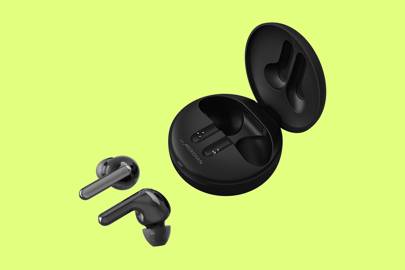
The visual merits of the ‘dangly stem’ design of true wireless in-ear headphones may not be obvious to everyone. LG has at least managed to keep the stem of the FN7 reasonably discreet, even if the trade-off is a slightly bulbous in-ear body.
The design is a comfortable one, though. At a touch under 6g per earbud, the FN7 are far from a burden to wear, and their selection of silicone eartips mean they’re simple to position securely. The FN7 is not a sport-orientated design, of course, but nevertheless they’re difficult to dislodge unless you really put your mind to it.
The earbuds’ shiny finish looks good, but can be dulled by fingerprints in next-to no time. The compact (55mm in diameter, 28mm deep), light (39g) charging case, with its soft, mildly grippy matte finish, is a fair bit more successful.
Build quality, naturally, is unquestionable. LG can build TVs and refrigerators flawlessly, so earbuds can’t be all that much of a challenge.
Features
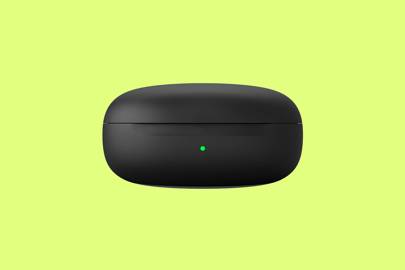
The FN7 use Bluetooth 5.0, compatible with SBC and AAC codecs, to get information on board. It’s not quite the cutting edge of wireless connectivity these days - and it would be nice to see some video-friendly aptX Low Latency involved - but it’s more than capable of handling hi-res digital audio files. So your top-tier streaming service subscription continues to be money well spent. And once the information is on board, it’s delivered by a couple of 6mm full-range neodymium drivers.
Battery life is an unremarkable 20 hours or so - five hours stored in the ‘buds themselves, plus three further charges in the case. Those figures are with active noise-cancellation switched on, mind you - and given that the earbuds and the charging case are so very compact, the numbers seem fair enough. Certainly it makes the 18 hours (maximum) you get from Bose’s QuietComfort Earbuds, which are big ‘buds in an even bigger case, look even more miserly.
There are a couple of little LEDs on the charging case. One indicates charging is happening (the case can be topped up either via USB-C or any QI-certified wireless charging pad), the other that the earbuds are being cleaned by UV light. Germophobes, rejoice.
Interface
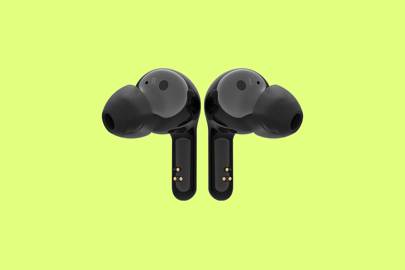
You’ve a couple of methods of interacting with FN7: the touch-controls integrated into the earbuds themselves, or LG’s exemplary Tone Free control app.
Each earbud features a tiny raised touch-surface from where it’s possible to control ‘volume up/down’, ‘skip forwards/backwards’, ‘play/pause’, ‘answer/end/reject call’ and ‘noise-cancelling on/off/ambient sound’. ‘Ambient sound’ gives a little boost to external sounds, making it possible to hear announcements or conduction conversations without removing the earbuds.
The Tone Free app, meanwhile, adds a selection of Meridian’s EQ settings (each quite self-explanatory: ‘natural’, ‘bass boost’, ‘treble boost’ and ‘immersive’) plus the opportunity to store two custom settings of your own design. It also possible to rearrange the touch-surface settings and choose between ‘high’ or ‘low’ noise-cancelling. There’s also a ‘find my earbuds’ setting, which delivers a piercing chirp through the ‘buds if you’re having trouble locating them.
It’s a comprehensive and good-looking app, easily the equal of the acknowledged class leaders from the likes of Bose, Sennheiser and Sony.
Performance
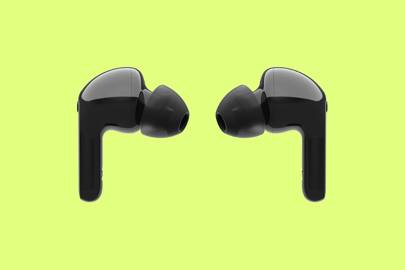
With the Meridian-derived EQ set to ‘natural’ and a 16bit/44.1kHz CD-standard file of Planetary Assault Systems’ Desert Races playing, there’s plenty to admire about the poised and attentive way the FN7 go about making music.
The bottom of the frequency range is nicely judged, with plenty of detail and texture to accompany the gratifyingly punchy bass sounds. Control is decent, too, so the tune fairly motors along with no bottom-end overhang and, as a consequence, a convincing sense of rhythm and tempo.
The midrange is similarly well-realised, with equally impressive levels of detail and insight, and at the top of the frequency range the LG attack with determination. Control is still in evidence, though, so while treble sounds have bite they never get overly hard - even at significant volume.
Switching to the rather more organic sound of Big Thief’s Shark Smile spotlights the spacious, well-defined soundstage the FN7 are capable of generating. The vocal sounds natural and characterful, with real conviction to the singer’s delivery. And the same impressive levels of rhythmic expression are evident too.
Each recording reveals a definite reticence where dynamics are concerned, though. Both the broad ‘quiet-to-loud’ crescendo-style stuff and the more subtle harmonic differences present in musical instruments are quite understated here. The result is that the FN7 don’t quite sound as engaging or realistic as they otherwise might.
‘Understated’ is a good way to describe the FN7 active noise-cancelling, too. Set it to ‘high’ in the app and there’s a definite reduction in external sound - but it’s far from removed, and so the LG are never as cocooning a listen as something like Bose’s almost supernaturally quiet QuietComfort Earbuds. Shift the setting to ‘low’ and it may as well be all the way off.
Call quality is very decent, though - the mic array in each earbud proves more than capable of delivering your voice crisply and without drop-outs.
As I said at the start, the world isn’t short of true wireless in-ear headphones. In fact, it’s a sign of just how spoiled for choice we all are that a competitively priced, musically quite spirited pair like the LG HBS-FN7, a pair that are properly made, have very acceptable battery life and an even more acceptable control app, aren’t quite complete enough to make it to the top table.
You can buy the LG Tone Free HBS-FN7 True wireless earphones from £119 now at Amazon and John Lewis.
Specs
Weight: 5.6g (per earbud); 39g (charging case)
Battery life: 5h (earbuds); 15h (charging case)
Bluetooth: 5.0; SBC, AAC
Waterproof: IPX4
Mics: 3 per earbud
More great stories from WIRED
🏎️ Lewis Hamilton opens up about activism and life beyond F1
🌊 Netflix’s Seaspiracy explores the impacts of overfishing. But will it make people change their behaviour?
🎧 Which music streaming service should you choose? We test Spotify, Apple Music and more
🔊 Listen to The WIRED Podcast, the week in science, technology and culture, delivered every Friday
👉 Follow WIRED on Twitter, Instagram, Facebook and LinkedIn
The Link LonkApril 18, 2021 at 12:02PM
https://ift.tt/3tok3e1
LG HBS-FN7 review: UV earbuds with more than bug-killing tech - Wired.co.uk
https://ift.tt/3eaxdmA
LG
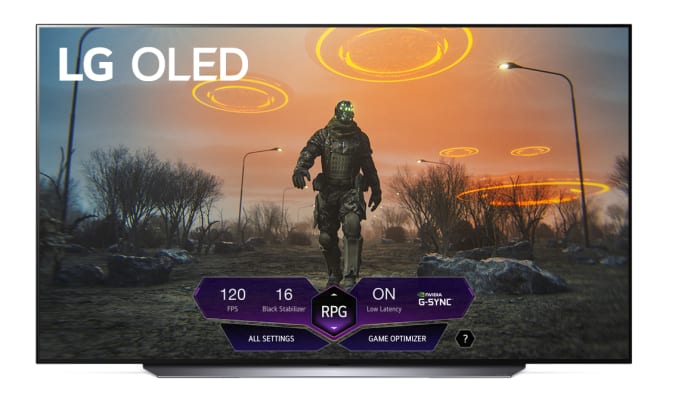
No comments:
Post a Comment